Chris Eboch's Blog, page 11
June 22, 2019
How to Write Vivid Scenes #amwriting
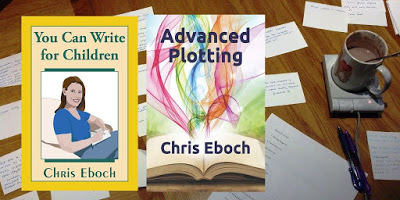 In fiction writing, a scene is a single incident or event. However, a summary of the event is not a scene. Scenes are written out in detail, shown, not told, so we see, hear, and feel the action. They often have dialog, thoughts, feelings, and sensory description, as well as action.
In fiction writing, a scene is a single incident or event. However, a summary of the event is not a scene. Scenes are written out in detail, shown, not told, so we see, hear, and feel the action. They often have dialog, thoughts, feelings, and sensory description, as well as action.A scene ends when that sequence of events is over. A story or novel is, almost always, built of multiple linked scenes. Usually the next scene jumps to a new time or place, and it may change the viewpoint character.
Think in terms of a play: The curtain rises on people in a specific situation. The action unfolds as characters move and speak. The curtain falls, usually at a dramatic moment. Repeat as necessary until you’ve told the whole story.
So how do you write a scene?
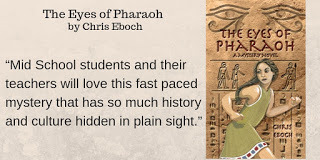 Place a character — usually your main character — in the scene. Give that character a problem.Add other characters to the scene as needed to create drama.Start when the action starts — don’t warm up on the reader’s time.What does your main character think, say, and do?What do the other characters do or say?How does your main character react?What happens next? Repeat the sequence of actions and reactions, escalating tension.Built to a dramatic climax.End the scene, ideally with conflict remaining. Give the reader some sense of what might happen next — the character’s next goal or challenge — to drive the plot forward toward the next scene. Don’t ramble on after the dramatic ending, and don’t end in the middle of nothing happening.
Place a character — usually your main character — in the scene. Give that character a problem.Add other characters to the scene as needed to create drama.Start when the action starts — don’t warm up on the reader’s time.What does your main character think, say, and do?What do the other characters do or say?How does your main character react?What happens next? Repeat the sequence of actions and reactions, escalating tension.Built to a dramatic climax.End the scene, ideally with conflict remaining. Give the reader some sense of what might happen next — the character’s next goal or challenge — to drive the plot forward toward the next scene. Don’t ramble on after the dramatic ending, and don’t end in the middle of nothing happening.Scene endings may or may not coincide with chapter endings. Some authors like to use cliffhanger chapter endings in the middle of a scene and finish the scene at the start of the next chapter. They then use written transitions (later that night, a few days later, when he had finished, etc.) or an extra blank line to indicate a break between scenes within a chapter.
A scene can do several things, among them:
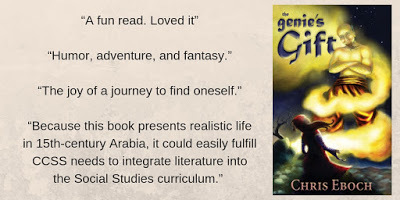 Advance the plot.Advance subplots.Reveal characters (their personalities and/or their motives).Set the scene.Share important information.Explore the theme.
Advance the plot.Advance subplots.Reveal characters (their personalities and/or their motives).Set the scene.Share important information.Explore the theme.Ideally, a scene will do multiple things. It may not be able to do everything listed above, but it should do two or three of those things, if possible. It should always, always, advance the plot. Try to avoid having any scene that only reveals character, sets the scene, or explores the theme, unless it’s a very short scene, less than a page. Find a way to do those things while also advancing the plot.
A scene often includes a range of emotions as a character works towards a goal, suffers setbacks, and ultimately succeeds or fails. But some scenes may have one mood predominate. In that case, try to follow with a scene that has a different mood. Follow an action scene with a romantic interlude, a happy scene with a sad or frightening one, a tense scene with a more relaxed one to give the reader a break.
Summarize Plot or Write Every Detail?
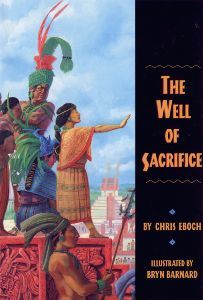 Don’t rush through a scene — use more description in scenes with the most drama, to increase tension by making the reader wait a bit to find out what happens. Important and dramatic events should be written out in detail, but occasionally you may want to briefly summarize in order to move the story forward. For example, if we already know what happened, we don’t need to hear one character telling another what happened. Avoid that repetition by simply telling us that character A explained the situation to character B.
Don’t rush through a scene — use more description in scenes with the most drama, to increase tension by making the reader wait a bit to find out what happens. Important and dramatic events should be written out in detail, but occasionally you may want to briefly summarize in order to move the story forward. For example, if we already know what happened, we don’t need to hear one character telling another what happened. Avoid that repetition by simply telling us that character A explained the situation to character B. Avoid scenes that repeat previous scenes, showing another example of the same action or information. Your readers are smart enough to get things without being hit over the head with multiple examples. If you show one scene of a drunk threatening his wife, and you do it well, we’ll get it. We don’t need to see five examples of the same thing. Focus on writing one fantastic scene and trust your reader to understand the characters and their relationship. For every scene, ask: Is this vital for my plot or characters? How does it advance plot and reveal character? If I cut the scene, would I lose anything?
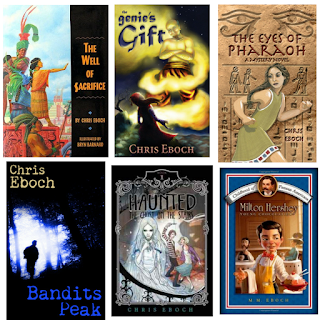 Next week: Connecting Scenes
Next week: Connecting ScenesGet More Writing Advice
Chris Eboch is the author of over 60 books for children, including nonfiction and fiction, early reader through teen. Her writing craft books include You Can Write for Children: How to Write Great Stories, Articles, and Books for Kids and Teenagers , and Advanced Plotting .
 Her novels for ages nine and up include
The Eyes of Pharaoh
, a mystery in ancient Egypt;
The Well of Sacrifice
, a Mayan adventure;
The Genie’s Gift
, a middle eastern fantasy; and the Haunted series, about kids who travel with a ghost hunter TV show, which starts with
The Ghost on the Stairs
. Learn more at https://chriseboch.com/ or her Amazon page.
Her novels for ages nine and up include
The Eyes of Pharaoh
, a mystery in ancient Egypt;
The Well of Sacrifice
, a Mayan adventure;
The Genie’s Gift
, a middle eastern fantasy; and the Haunted series, about kids who travel with a ghost hunter TV show, which starts with
The Ghost on the Stairs
. Learn more at https://chriseboch.com/ or her Amazon page.
Advanced Plotting is designed for the intermediate and advanced writer: you’ve finished a few stories, read books and articles on writing, taken some classes, attended conferences. But you still struggle with plot, or suspect that your plotting needs work.
Advanced Plotting can help.
Published on June 22, 2019 02:00
June 15, 2019
Novel First Chapters: Opening Exercises #amwriting
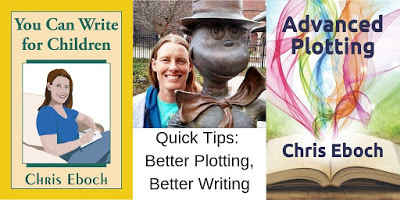 I've been talking about the promise a first chapter makes, and how to get off to a fast start. Now try these exercises to explore how openings make promises.
I've been talking about the promise a first chapter makes, and how to get off to a fast start. Now try these exercises to explore how openings make promises.First Chapters in Novels: Opening ExercisesPick up one of your favorite novels. Reread the first chapter. What promises does it make? From your knowledge of the book, does it fulfill those promises? Repeat this exercise with other books. Try it with short stories and articles, judging the promises made in the first few lines.
When you start reading a new novel, pause at the end of the first chapter. Could you identify the genre, main character, point of view, and setting? Is the main character facing a challenge? Make a note of these promises. At the end of the book, decide whether each promise was fulfilled. Try reading short stories and articles this way as well.
Think about your work in progress. What do you want to promise? Check your first chapter for each of the following:
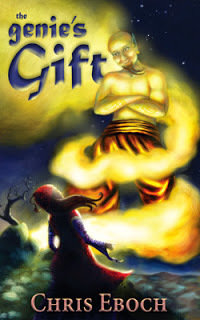 Does it clearly identify the genre?Does it identify the setting, including time period, country, and urban/rural/suburban lifestyle? Does it suggest whether this is a school story, a family story, an epic interstellar journey, or whatever?Does it introduce the main character and possibly one or more other important characters?Does it clearly establish the point of view and the tone of the book (funny, lyrical, intellectual, or whatever)?Is a problem introduced quickly? If it is not the primary plot problem, does the opening challenge at least relate to or lead to the main problem?
Does it clearly identify the genre?Does it identify the setting, including time period, country, and urban/rural/suburban lifestyle? Does it suggest whether this is a school story, a family story, an epic interstellar journey, or whatever?Does it introduce the main character and possibly one or more other important characters?Does it clearly establish the point of view and the tone of the book (funny, lyrical, intellectual, or whatever)?Is a problem introduced quickly? If it is not the primary plot problem, does the opening challenge at least relate to or lead to the main problem? Few authors wind up using their original openings. Some authors write a novel, then throw away the first chapter and write a new first chapter — the one that belongs there. It seems like it’s almost impossible to write a strong opening until you’ve finished the rest of the book. The final version of the opening may actually be the last thing we write!
Openings are a struggle for many of us, but don’t worry about the beginning during the first draft. Chances are it will change completely anyway, so wait until you have a solid plot before you start fine-tuning your opening. You need to know the rest of your story in order to figure out what your opening should be.
Don’t stress about the opening during your early drafts, but do make sure you fix it later. Keep in mind that fixing the beginning may involve throwing it out altogether and replacing it with something else or simply starting later in the story. In the end, you’ll have the beginning you need.
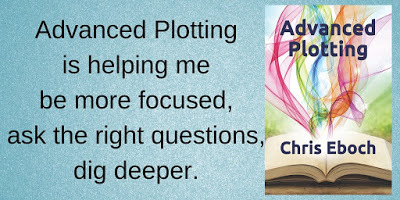 Get More Writing AdviceIn Advanced Plotting, you'll get two dozen essays like this one on the craft of writing. Advanced Plotting is designed for the intermediate and advanced writer: you’ve finished a few stories, read books and articles on writing, taken some classes, attended conferences. But you still struggle with plot, or suspect that your plotting needs work.
Get More Writing AdviceIn Advanced Plotting, you'll get two dozen essays like this one on the craft of writing. Advanced Plotting is designed for the intermediate and advanced writer: you’ve finished a few stories, read books and articles on writing, taken some classes, attended conferences. But you still struggle with plot, or suspect that your plotting needs work.Advanced Plotting can help.
 Chris Eboch is the author of over 60 books for children, including nonfiction and fiction, early reader through teen. Her writing craft books include
You Can Write for Children: How to Write Great Stories, Articles, and Books for Kids and Teenagers
, and
Advanced Plotting
.
Chris Eboch is the author of over 60 books for children, including nonfiction and fiction, early reader through teen. Her writing craft books include
You Can Write for Children: How to Write Great Stories, Articles, and Books for Kids and Teenagers
, and
Advanced Plotting
.Her novels for ages nine and up include The Eyes of Pharaoh , a mystery in ancient Egypt; The Well of Sacrifice , a Mayan adventure; The Genie’s Gift , a middle eastern fantasy; and the Haunted series, about kids who travel with a ghost hunter TV show, which starts with The Ghost on the Stairs . Learn more at https://chriseboch.com/ or her Amazon page.
Published on June 15, 2019 03:00
June 8, 2019
Novel First Chapters: The Fast Start - #amwriting
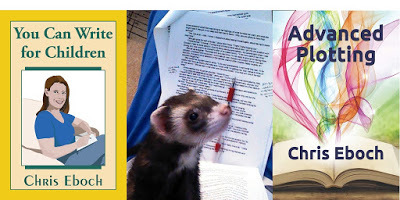 Last week I talked about the promise a first chapter makes to the reader, and what you should include. This essay from Advanced Plotting continues with advice on getting off to a fast start.
Last week I talked about the promise a first chapter makes to the reader, and what you should include. This essay from Advanced Plotting continues with advice on getting off to a fast start.Starting Your Novel Quickly An opening introduces many elements of the story. Yet you can’t take too long to set the scene, or your readers may lose interest. You want to start in a moment of action, where something is changing, and cut the background. But don’t rush things — take a little time to set up the situation, so it makes sense and we care about the characters and what’s happening to them.
Fast, but not too fast. How do you find the balance?
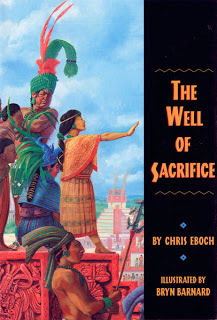 You can test your opening by seeing how much you can cut. What if you delete the first sentence, the first paragraph, the first page? Does the story still make sense? Does it get off to a faster start? For a novel, what if you cut the whole first chapter, or several chapters? If you can’t cut, can you condense?
You can test your opening by seeing how much you can cut. What if you delete the first sentence, the first paragraph, the first page? Does the story still make sense? Does it get off to a faster start? For a novel, what if you cut the whole first chapter, or several chapters? If you can’t cut, can you condense?On the other hand, if your beginning feels confusing or rushed, you might want to try starting earlier in the story. Try setting up a small problem that grabs the reader’s attention, luring them in until you can get to the main problem. In my novel The Well of Sacrifice, the Maya are dealing with famine, disease, and marauders in the early chapters, even before the king dies and an evil high priest tries to take over. That gives readers time to understand these characters and their unusual world.
 My Egyptian mystery, The Eyes of Pharaoh, opens with the main character running — an active scene, even though she’s merely running for pleasure. In the rest of that first chapter, Seshta, a young temple dancer, is focused on a dance contest she wants to win. This introduces a challenge and a goal, and the contest is a major subplot throughout the book, though not the primary plot line. By the end of the first chapter, Seshta’s friend Reya, a young soldier, warns her that Egypt may be in danger. She doesn’t believe him, but the reader has seen the seeds of the main plot, which will develop when Reya disappears and Seshta searches for him, uncovering a plot against the Pharaoh.
My Egyptian mystery, The Eyes of Pharaoh, opens with the main character running — an active scene, even though she’s merely running for pleasure. In the rest of that first chapter, Seshta, a young temple dancer, is focused on a dance contest she wants to win. This introduces a challenge and a goal, and the contest is a major subplot throughout the book, though not the primary plot line. By the end of the first chapter, Seshta’s friend Reya, a young soldier, warns her that Egypt may be in danger. She doesn’t believe him, but the reader has seen the seeds of the main plot, which will develop when Reya disappears and Seshta searches for him, uncovering a plot against the Pharaoh.The inciting incident — the problem that gets the story going — should happen as soon as possible, but not until the moment is ripe. The reader must have enough understanding of the character and situation to make the incident meaningful. Too soon, and the reader is confused. Too late, and the reader gets bored first.
 Options for Fast Starts:· Start in the action, at a moment of change. Then work in the back story.· Start with two people on the page.· Start in the middle of a fight or other conflict.· Start with a cliffhanger — something powerful about to happen.· Start with a small problem that leads to the big problem, or is an example of the main problem.
Options for Fast Starts:· Start in the action, at a moment of change. Then work in the back story.· Start with two people on the page.· Start in the middle of a fight or other conflict.· Start with a cliffhanger — something powerful about to happen.· Start with a small problem that leads to the big problem, or is an example of the main problem.Keeping Your Writing Style With all the pressure to write a great opening, people often struggle to find an opening scene that is dramatic, powerful, and eye-catching! Something that will make the reader want to keep reading!!!
We may see our opening as something almost separate from the full manuscript — something we can submit to a first pages critique or send to an editor or agent who only wants to see a few pages as a sample. But treating the opening paragraphs as an ad may not be best for the rest of the manuscript. A clever, funny hook is great — but only if the rest of the book is also clever and funny.
Many readers will browse a book’s opening pages in a library or bookstore to decide if they want to take the book home. If you offer the reader a fast-paced, action-packed opening, when your book is really a subtle emotional drama with lyrical descriptive writing, you’re going to disappoint the readers who enjoyed the opening. Even worse, readers who would have enjoyed the whole book might never get past the opening page.
The same holds true for stories on a smaller scale. Even if your story only lasts a few pages, your readers are making judgments during your opening lines. Don’t confuse them by starting one way and then turning the story into something else.
Next week: Opening Exercises
 Chris Eboch is the author of over 60 books for children, including nonfiction and fiction, early reader through teen. Her writing craft books include
You Can Write for Children: How to Write Great Stories, Articles, and Books for Kids and Teenagers
, and
Advanced Plotting
.
Chris Eboch is the author of over 60 books for children, including nonfiction and fiction, early reader through teen. Her writing craft books include
You Can Write for Children: How to Write Great Stories, Articles, and Books for Kids and Teenagers
, and
Advanced Plotting
.Her novels for ages nine and up include The Eyes of Pharaoh , a mystery in ancient Egypt; The Well of Sacrifice , a Mayan adventure; The Genie’s Gift , a middle eastern fantasy; and the Haunted series, about kids who travel with a ghost hunter TV show, which starts with The Ghost on the Stairs . Learn more at https://chriseboch.com/ or her Amazon page.
Published on June 08, 2019 03:00
June 1, 2019
The Promise of the First Chapter: #Writing Advice #amwriting
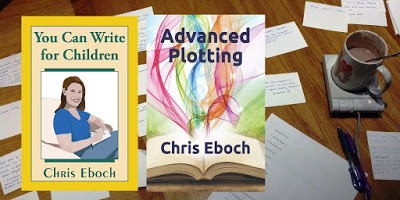 The Promise of the First Chapter
The Promise of the First ChapterYou’ll hear it over and over again — opening lines are important. Your opening makes a promise about the rest of the story, article, or book. It tells readers what to expect, setting the stage for the rest of the story to unfold — and hopefully hooking their interest.
What You Promise
The first scene should identify your story’s genre. This can be trickier than it sounds. Say it’s a romance, but the main character doesn’t meet the love interest until later. Can you at least suggest her loneliness or desire for romance? (And get that love interest in there as soon as possible!)
 Maybe you’re writing a story involving magic, time travel, ghosts, or a step into another dimension, but you want to show the normal world before you shift into fantasy. That’s fine, but if we start reading about a realistic modern setting and then halfway through magic comes out of nowhere, you’ll surprise your reader — and not in a good way. Your story will feel like two different stories clumsily stitched together.
Maybe you’re writing a story involving magic, time travel, ghosts, or a step into another dimension, but you want to show the normal world before you shift into fantasy. That’s fine, but if we start reading about a realistic modern setting and then halfway through magic comes out of nowhere, you’ll surprise your reader — and not in a good way. Your story will feel like two different stories clumsily stitched together. If you’re going to start “normal” and later introduce an element like magic or aliens, try to hint at what’s to come. Maybe the main character is wishing that magic existed — that’s enough to prepare the reader. In my novel The Ghost on the Stairs, we don’t find out that the narrator’s sister has seen a ghost until the end of chapter 2. But on the opening page, she comments that the hotel “looks haunted” and is “spooky.” Those words suggest that a ghost story may be coming. That’s enough to prep the reader. (The title doesn’t hurt either.)
Your opening should also identify the story’s setting. This includes when and where we are, if it’s historical or set in another country or world. Once again, you don’t want your reader to assume a modern story and then discover halfway through that it’s actually a historical setting. They’ll blame you for their confusion. In a contemporary story, you may not identify a specific city, but the reader should have a feel for whether this is inner-city, small-town, suburban, or whatever.
Who and What’s Up in Your Novel's Opening PagesYour opening pages should focus on your main character. You may find exceptions to this rule, but your readers will assume that whoever is prominent in the opening pages is the main character. Switching can cause confusion. You should also establish your point of view early. If you’ll be switching points of view, don’t wait too long to make the first switch. In novels, typically you want to show your alternate point of view in the second chapter and then switch back and forth with some kind of regular rhythm.
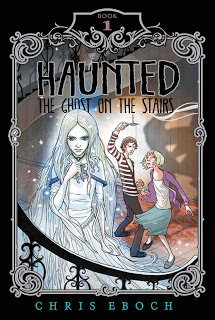 And of course, you want some kind of challenge or conflict in your opening. This doesn’t have to be the main plot problem — you may need additional set up before your main character takes on that challenge or even knows about it. But try to make sure that your opening problem relates to the main problem. It may even lead to it.
And of course, you want some kind of challenge or conflict in your opening. This doesn’t have to be the main plot problem — you may need additional set up before your main character takes on that challenge or even knows about it. But try to make sure that your opening problem relates to the main problem. It may even lead to it.In The Ghost on the Stairs, Tania faints at the end of chapter 1. Jon does not yet know why, but this opening problem leads to the main problem — she’d seen a ghost. If I’d used an entirely different opening problem, say stress with their new stepfather, that would have suggested a family drama, not a paranormal adventure.
In a short story, you need to introduce your main conflict even more quickly. A story I sold to Highlights started like this:
Jaguar Paw watched the older Mayan boys play pok-a-tok. The ball skidded around the court as the players tried to keep it from touching the ground. They used their arms, knees, and hips, but never their hands or feet. The best pok-a-tok players were everybody’s heroes. These boys were just practicing. But that meant Jaguar Paw could watch from the edge of the court.
That opening paragraph, 64 words, introduces the main character, identifies the foreign, historical setting, includes a specific location (the ball court), and hints at Jaguar Paw’s desire to be a ballplayer. Genre, setting, main character, and conflict, all up front.
Next week: The Fast Start
 Get More Writing Advice
Get More Writing AdviceChris Eboch is the author of over 60 books for children, including nonfiction and fiction, early reader through teen. Her writing craft books include You Can Write for Children: How to Write Great Stories, Articles, and Books for Kids and Teenagers , and Advanced Plotting .
Her novels for ages nine and up include The Eyes of Pharaoh , a mystery in ancient Egypt; The Well of Sacrifice , a Mayan adventure; The Genie’s Gift , a middle eastern fantasy; and the Haunted series, about kids who travel with a ghost hunter TV show, which starts with The Ghost on the Stairs . Learn more at https://chriseboch.com/ or her Amazon page.
Published on June 01, 2019 02:30
May 25, 2019
Writing Great Endings - Quick #Writing tips for #KidLit or any #amwriting
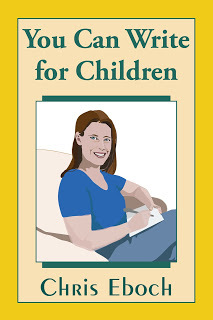 I hope these quick writing tips helps you jumpstart your writing!
I hope these quick writing tips helps you jumpstart your writing!This series on Developing Ideas is excerpted from You Can Write for Children: How to Write Great Stories, Articles, and Books for Kids and Teenagers . Get the book if you want to see all the info at once. The book addresses writing stories for children, but if you want to write for adults, simply do the exercises ignoring the "as a child" part.
I've been talked about “Building a Story in Four Parts.” We discussed developing the middle and writing a strong climax. Now on to…
Happy EndingsThe climax ends with the resolution. You could say that the resolution finishes the climax, but it comes from the situation: it’s how the main character finally meets that original challenge.
In almost all cases the main character should resolve the situation himself. No cavalry to the rescue! We’ve been rooting for the main character to succeed, so if someone else steals the climax away from him or her, it robs the story of tension and feels unfair.
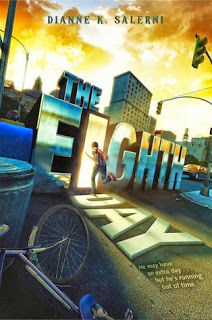 Here’s where many beginning children’s writers fail. It’s tempting to have an adult – a parent, grandparent, or teacher, or even a fairy, ghost, or other supernatural creature – step in to save the child or tell him what to do. But kids are inspired by reading about other children who tackle and resolve problems. It helps them believe they can meet their challenges, too. When adults take over, it shows kids as powerless and dependent on grownups.
Here’s where many beginning children’s writers fail. It’s tempting to have an adult – a parent, grandparent, or teacher, or even a fairy, ghost, or other supernatural creature – step in to save the child or tell him what to do. But kids are inspired by reading about other children who tackle and resolve problems. It helps them believe they can meet their challenges, too. When adults take over, it shows kids as powerless and dependent on grownups. Dianne K. Salerni, author of The Eighth Dayseries, says, “To be a writer of children’s books, you need to be a child inside. You need to write like a child would write (except with the skill of an adult), and you need to read what your child-self wants to read. ... The best children’s literature is written by adults who think they are still children, not by adults who want to ‘help’ children grow up.”
Regardless of your character’s age, let your main character control the story all the way to the end (though others may assist).
 For example, Sam Bond’s Cousins in Action series is an ensemble featuring five cousins who have international adventures. The children take turns at being the hero throughout each book. In Operation Golden Llama, three of the young protagonists find themselves kidnapped on a mountainside in Peru. Their eleven-year-old cousin outwits the adults and treks through the jungle to come to their rescue. That may not be entirely realistic in real life, but it’s great entertainment for young readers!
For example, Sam Bond’s Cousins in Action series is an ensemble featuring five cousins who have international adventures. The children take turns at being the hero throughout each book. In Operation Golden Llama, three of the young protagonists find themselves kidnapped on a mountainside in Peru. Their eleven-year-old cousin outwits the adults and treks through the jungle to come to their rescue. That may not be entirely realistic in real life, but it’s great entertainment for young readers!Although your main character should be responsible for the resolution, she doesn’t necessarily have to succeed. She might, instead, realize that her goals have changed. The happy ending then comes from her new understanding of her real needs and wants. Some stories may even have an unhappy ending, where the main character’s failure acts as a warning to readers. This is more common in literary novels than in genre fiction.
A Quick Ending Tip: · How the main character resolves the situation – whether she succeeds or fails, and what rewards or punishments she receives – will determine the theme. For example, a story with the theme “Love conquers all” would have a different resolution than a story with the theme “Love cannot always survive great hardship.” Learn more about Theme in You Can Write for Children , Chapter 13.
The next time you have a great idea but can’t figure out what to do with it, check if you have all four parts of the story. If not, see if you can develop that idea into a complete, dramatic story or novel by expanding your idea, complications, climax, or resolution, as needed. Then readers will be asking you, “Where did you get that fabulous idea?” Get More Writing Advice
Chris Eboch is the author of over 60 books for children, including nonfiction and fiction, early reader through teen. Her writing craft books include You Can Write for Children: How to Write Great Stories, Articles, and Books for Kids and Teenagers , and Advanced Plotting .

Her novels for ages nine and up include The Eyes of Pharaoh , a mystery in ancient Egypt; The Well of Sacrifice , a Mayan adventure; The Genie’s Gift , a middle eastern fantasy; and the Haunted series, about kids who travel with a ghost hunter TV show, which starts with The Ghost on the Stairs . Learn more at https://chriseboch.com/ or her Amazon page.
Published on May 25, 2019 02:30
May 18, 2019
Making Money from Writing #amwriting
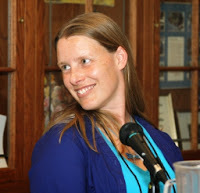 Handout for Earning a Living as a Writer, with Chris Eboch
Handout for Earning a Living as a Writer, with Chris EbochTrade Book Advances: $2000-$30,000 and up. May take several years to receive all payments. Difficult to control or predict sales. Some small publishers do not pay advances.Royalties: Passive income that can last for years. Requires a royalty agreement that earns out. May take years after the book sale. Difficult to control or predict sales.Work-for-Hire Books: Flat fee (usually), quick turnaround time, assigned topics. Pays from a few hundred to several thousand dollars. Good for building a resume. Can be steady income.Self-Publishing: Upfront costs, especially with images. Potential income for years. A way to make use of unsold manuscripts. Very tough market, especially for middle grade and younger. Create something unique and in demand. Know how you’ll reach readers. Invest in ads.Magazine Articles: 5 cents - $2 per word. Target niche mags. You can build a resume and show expertise. Make use of your research from other projects. Educational Test Passages/Assessment: Can be good pay for small jobs ($60-$400 for less than 1000 words; $10+ for each question). Requires ability to write a variety of genres, topics, and targeted grade levels. Mainly seasonal work. Good for those with teaching experience.Teaching: Community colleges, senior centers, summer programs, etc. Online: correspondence schools, webinars. One-on-one mentoring. Often low pay but builds resume/authority.Critiques: Requires experience as an editor/teacher as well as a writer. Reputation counts. Pay can be $25-$50 an hour or more.Copyediting/Proofreading: Requires specific expertise and training. Can be excellent money.School Visits: Pay varies greatly ($100-$3000 per day). Helps market your books. If you’re not a well-known author, focus on what you’ll teach kids – help them do better on tests, foster love of reading, tie in to science or social studies curriculum.
General Info on Making Money from WritingMaking a Living from Writing? – Chris on sources of incomeHow to Be a Healthy, Happy Freelancer/Writer – Marlo Garnsworthy shares practical advice on running your own business: time management, organizations, clerical work, accountability. Laura Purdie Salas shares her 2014 income and sources.For children’s book writers, the SCBWI discussion boardshave sections on work for hire, self-publishing, magazines, contracts, taxes, and moreUpod: “a place for freelancers to support, inspire, amuse, inform, advise, celebrate and hire each other.” (I have not tried it.) https://www.facebook.com/groups/1722043024712301/From Self-Publishing to Blogging: 7 Solid Ways to Make Money Writing, by Blake Atwood (editing, teaching, freelance articles): https://thewritelife.com/7-ways-to-make-money-writing/ Freedom With Writing newsletter: writing jobs and articles to help you be a freelance writer: https://www.freedomwithwriting.com/
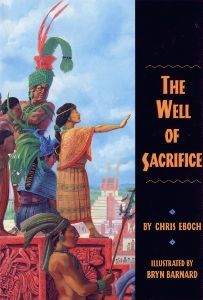 Kelly James-Enger “Dollars and Deadlines” blog on ghostwriting, articles, etc.The Well Fed Writer by Peter BowermanSecrets of a Freelance Writer by Bob Bly
Kelly James-Enger “Dollars and Deadlines” blog on ghostwriting, articles, etc.The Well Fed Writer by Peter BowermanSecrets of a Freelance Writer by Bob BlyMake Money from Trade Publishing
Editorial Anonymous’ Publishing Dictionary posts – definitions of royalties, advances, earning out and more: http://tinyurl.com/ajesxl Curriculum tie-ins: Next Generation Science Standards, National Curriculum Standards for Social Studies, Curriculum: National and State Standards | Education World
Make Money from Self-PublishingIndie publishing worksheet – are you ready/what you need: https://chriseboch.com/for-writers/ What Defines “Traditional” Publishing? Anne R. Allen: http://tinyurl.com/n35mofq Jane Friedman details different paths to publishing: http://tinyurl.com/k3ay9bw Go regional or tie to curriculum (such as NextGen Science Standards). Go for awards. List w/educational distributors. Resources & distributors: www.darcypattison.com/scbwi/ Darcy Pattison on indie publishing nonfiction for kids: https://www.darcypattison.com/
Writing Work for Hire/Test PassagesYes! You Can Learn How to Write Children’s Books, Get Them Published, and Build a Successful Writing Career, by Nancy SandersWriting Children’s Nonfiction Books for the Educational Market, by Laura Purdie SalasEvelyn Christensen’s list of Educational MarketsPARCC Samples of test passages: under the Assessments tab, see "practice tests" and "released items" Get Curriculum Development Jobs: job postings in curriculum developmentEducation Writers Association has job listings, mainly full-time in-person
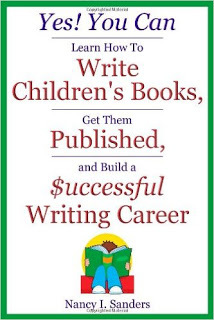 Linked In has a freelance job searchsite now. Kirsten Larson has posts on work for hire, writing for children's magazines, and writing routines: https://kirsten-w-larson.com/for-writers/Education Writers Association has jobs, mainly full-time in-person: http://www.ewa.org/career-centerChris on Getting Started In Educational Publishing Work for Hire
Linked In has a freelance job searchsite now. Kirsten Larson has posts on work for hire, writing for children's magazines, and writing routines: https://kirsten-w-larson.com/for-writers/Education Writers Association has jobs, mainly full-time in-person: http://www.ewa.org/career-centerChris on Getting Started In Educational Publishing Work for HireChecking Grade Levels: ATOS or LexileLexile: http://www.lexile.com/analyzer/
Lexile highlighting the more difficult words: http://www.lextutor.ca/vp/eng/
Typical Lexile Reader Measures by Grade: http://tinyurl.com/yaalxkqg ATOS http://www.renlearn.com/atos/
Writing Magazine Articles Get magazine samples at your library, school, or house of worship; requests sample copies from the publisher; visit publishers’ web sites – many have online samples.Writer’s Digest books on freelance writing and magazines: https://www.writersdigestshop.com/writing-genre/freelance-writingWriters Market site from Writer’s Digest: http://www.writersmarket.com/cms/open/nonfictionMarket directory from All Freelance Writing: https://allfreelancewriting.com/writers-markets/Markets from FundsforWriters: https://fundsforwriters.com/markets/List of Magazines for Children with links to websites from the Monroe County Public Library
School Visits
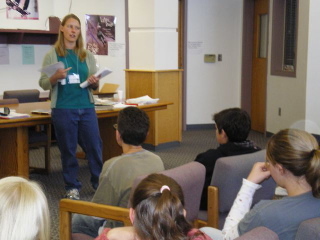 Skype An Author Network for online visits: http://skypeanauthor.wikifoundry.com/School Visit Experts – advice on programs and biz tips: schoolvisitexperts.com
Skype An Author Network for online visits: http://skypeanauthor.wikifoundry.com/School Visit Experts – advice on programs and biz tips: schoolvisitexperts.com Time management:Programs such as Slimtimer track your hours per project (I have not tried it.)
 Chris Eboch writes fiction and nonfiction for all ages, with over 60 traditionally published books for children and six novels for adults. Advanced Plotting helps writers fine-tune their plots. To explore writing for children, try You Can Write for Children: How to Write Great Stories, Articles, and Books for Kids and Teenagers, and Advanced Plotting. Learn more at https://chriseboch.com/ or her Amazon page. See her writing blog at chriseboch.blogspot.com/.
Chris Eboch writes fiction and nonfiction for all ages, with over 60 traditionally published books for children and six novels for adults. Advanced Plotting helps writers fine-tune their plots. To explore writing for children, try You Can Write for Children: How to Write Great Stories, Articles, and Books for Kids and Teenagers, and Advanced Plotting. Learn more at https://chriseboch.com/ or her Amazon page. See her writing blog at chriseboch.blogspot.com/.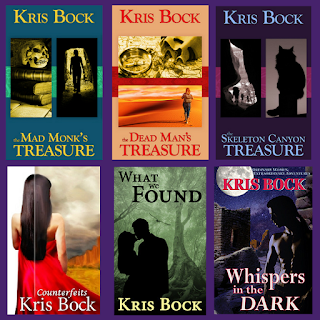 Chris also writes for adults under the name Kris Bock. Kris Bock writes action-packed romantic suspense involving outdoor adventures and Southwestern landscapes. Her work has been called “smart romance with an Indiana Jones feel” and “like Nancy drew for grown-ups.”
Chris also writes for adults under the name Kris Bock. Kris Bock writes action-packed romantic suspense involving outdoor adventures and Southwestern landscapes. Her work has been called “smart romance with an Indiana Jones feel” and “like Nancy drew for grown-ups.”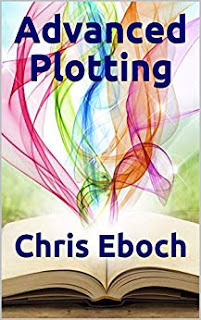 Sign up for a manuscript critique with Chris! Get detailed editorial comments to help you improve your story. See her website’s “for writers” pagefor details.
Sign up for a manuscript critique with Chris! Get detailed editorial comments to help you improve your story. See her website’s “for writers” pagefor details.
Published on May 18, 2019 05:00
May 13, 2019
Developing Your Story Climax: Quick #Writing tips for #KidLit or any #amwriting
 I hope these quick writing tips helps you jumpstart your writing!
I hope these quick writing tips helps you jumpstart your writing!This series on Developing Ideas is excerpted from You Can Write for Children: How to Write Great Stories, Articles, and Books for Kids and Teenagers . Get the book if you want to see all the info at once. The book addresses writing stories for children, but if you want to write for adults, simply do the exercises ignoring the "as a child" part.
Two weeks ago I talked about “Building a Story in Four Parts.” Last week we discussed developing the middle in more detail. Now let's explore the climax and ending.
Can She Do It?! – The Story ClimaxYour character has faced complications through the middle of the story. Finally, at the climax, the main character must succeed or fail. Time is running out. The race is near the end. The girl is about to date another guy. The villain is starting the battle.
One way or another, your complications have set up a situation where it’s now or never. However you get there, the climax will be strongest if it is truly the last chance. You lose tension if the reader believes the main character could fail this time, and simply try again tomorrow.
 Writing Tips for The Climax• Don’t rush the climax. Take the time to write the scene out in vivid detail, even if the action is happening fast. Think of how movies switch to slow motion, or use multiple shots of the same explosion, in order to give maximum impact to the climax. Use plenty of dramatic detail and your main character’s thoughts and feelings to pull every bit of emotion out of the scene.
Writing Tips for The Climax• Don’t rush the climax. Take the time to write the scene out in vivid detail, even if the action is happening fast. Think of how movies switch to slow motion, or use multiple shots of the same explosion, in order to give maximum impact to the climax. Use plenty of dramatic detail and your main character’s thoughts and feelings to pull every bit of emotion out of the scene.• To make the climax feel fast-paced, use mainly short sentences and short paragraphs. The reader’s eyes move more quickly down the page, giving a sense of breathless speed. (This is a useful technique for cliffhanger chapter endings as well.)
Stop back next week for advice on Happy Endings.
Get More Writing AdviceChris Eboch is the author of over 60 books for children, including nonfiction and fiction, early reader through teen. Her writing craft books include You Can Write for Children: How to Write Great Stories, Articles, and Books for Kids and Teenagers , and Advanced Plotting .
Her novels for ages nine and up include The Eyes of Pharaoh , a mystery in ancient Egypt; The Well of Sacrifice , a Mayan adventure; The Genie’s Gift , a middle eastern fantasy; and the Haunted series, about kids who travel with a ghost hunter TV show, which starts with The Ghost on the Stairs . Learn more at https://chriseboch.com/ or her Amazon page.

Published on May 13, 2019 03:00
May 11, 2019
Writing #KidLit #Nonfiction with Chris Eboch
Here's the handout from my webinar:
Writing Nonfiction, with Chris EbochTrade Book Advances: $2000-$10,000 and up. May take several years to receive all payments. Difficult to control or predict sales.Royalties: Passive income that can last for years. Requires a royalty agreement that earns out. May take years after the book sale.Work-for-Hire Books: Flat fee (usually), quick turnaround time, assigned topics. Pays from a few hundred to several thousand dollars. Can be steady work. Good for building a resume.Electronic Databases: Schoolwide/Zing takes NF texts and pays royalties.Self-Publishing: Upfront costs, but potentially passive income for years. A way to make use of unsold manuscripts. Very tough market. Try regional with strong curriculum ties.Magazine Articles: Generally low pay for children’s magazines, but can be several hundred dollars. Make use of your research from other projects. Build a resume, show expertise.Educational Test Passages/Assessment: Often decent pay for small jobs ($70-$400 for less than 1000 words). Requires ability to write a variety of genres, topics, and targeted grade levels. Mainly seasonal work. Writing test questions is complicated but pays well (~$12 per question).School Visits: Pay varies greatly. Helps market your books. If you’re not a well-known author, focus on what you’ll teach kids – help them do better on tests, tie in to curriculum.
General Info on Nonfiction Writing for ChildrenNF for Kids Yahoo Group (largely inactive but you can browse old posts): https://groups.yahoo.com/neo/groups/NFforKids/info The SCBWI discussion boards have sections on work for hire, self-publishing, magazines, contracts, taxes, and more: http://www.scbwi.org/boards/index.phpKelly James-Enger on ghostwriting, articles, etc.: http://dollarsanddeadlines.blogspot.com Darcy Pattison on indie publishing: https://www.darcypattison.com/From Self-Publishing to Blogging: 7 Solid Ways to Make Money Writing, by Blake Atwood (editing, teaching, freelance articles): https://thewritelife.com/7-ways-to-make-money-writing/ Freedom With Writing newsletter: writing jobs and articles to help you be a freelance writer: https://www.freedomwithwriting.com/Chris on Writing Nonfiction Books for Children: Market Research
Trade Publishing NonfictionEditorial Anonymous’ Publishing Dictionary posts – definitions of royalties, advances, earning out and more: http://tinyurl.com/ajesxl Curriculum tie-ins: Next Generation Science Standards, National Curriculum Standards for Social Studies, Curriculum: National and State Standards | Education World
Nonfiction Educational/Work for Hire BooksYes! You Can Learn How to Write Children’s Books, Get Them Published, and Build a Successful Writing Career, by Nancy SandersWriting Children’s Nonfiction Books for the Educational Market, by Laura Purdie SalasEvelyn Christensen’s list of Educational Markets: http://evelynchristensen.com/markets.html Chris on Getting Started In Educational Publishing Work for Hire
Writing KidLit Magazine Articles Magazine Markets for Children’s Writers, Book Markets for Children’s Writers and Children’s Writers and Illustrator’s Market list magazines. The SCBWI “Magazine Market Guide” is in The Book, included with membership. Get magazine samples at your library, school, or house of worship; requests sample copies from the publisher; publishers’ web sites may have online samples. List of mags w/links to websites: http://www.monroe.lib.in.us/childrens/kidsmags.html and http://blog.allaboutlearningpress.com/magazines-for-kids/ Chris on Magazine Market Research, Analyze Magazines for Content and Style, and Writing for Magazines: Start Small and Focused
Self-Publishing NonfictionIndie publishing worksheet – are you ready/what you need: https://chriseboch.com/for-writers/ What Defines “Traditional” Publishing? Anne R. Allen: http://tinyurl.com/n35mofq
Jane Friedman details different paths to publishing: http://tinyurl.com/k3ay9bw Go regional or tie to curriculum or both. Go for awards. List w/educational distributors. Resources and distributors: www.darcypattison.com/scbwi/
School VisitsSkype An Author Network for online visits: http://skypeanauthor.wikifoundry.com/School Visit Experts – advice on programs and biz tips: schoolvisitexperts.com
Grade Levels: ATOS or LexileLexile: http://www.lexile.com/analyzer/ Lexile highlighting the more difficult words: http://www.lextutor.ca/vp/eng/
How Lexile Relates to Grade: http://tinyurl.com/yaalxkqgATOS http://www.renlearn.com/atos/
Writing WellChris on Six Ways To Brainstorm Story Ideas, How To Find Story Ideas, You Can Find Story Ideas, How To Find Story Ideas And Get Started Writing,Developing Story and Article Ideas.
How To Write A Non-Fiction Book Outline In Two Days, with Joanna Penn: https://www.thecreativepenn.com/2019/04/26/how-to-write-a-non-fiction-book-outline-in-two-days/
 Chris Ebochwrites fiction and nonfiction for all ages, with 60+ traditionally published books for children. Her novels for ages nine and up include Bandits Peak, a survival thriller;
The Genie’s Gift
; an Arabian fantasy,
The Eyes of Pharaoh
, a mystery in ancient Egypt; and
The Well of Sacrifice
, a Mayan adventure. Learn more at www.chriseboch.comor her Amazon page.
Chris Ebochwrites fiction and nonfiction for all ages, with 60+ traditionally published books for children. Her novels for ages nine and up include Bandits Peak, a survival thriller;
The Genie’s Gift
; an Arabian fantasy,
The Eyes of Pharaoh
, a mystery in ancient Egypt; and
The Well of Sacrifice
, a Mayan adventure. Learn more at www.chriseboch.comor her Amazon page.
Chris is the author of You Can Write for Children: How to Write Great Stories, Articles, and Books for Kids and Teenagers and Advanced Plotting. Check out writing tips at her Write Like a Pro! blog. Sign up for her workshop newsletterfor online classes and critique offers.
Chris also writes novels of suspense and romance for adults under the name Kris Bock; read excerpts at www.krisbock.comor visit her Amazon page.
Sign up for a manuscript critique with Chris! Get detailed editorial comments to help you improve your story. Email chriseboch@gmail.comor see her website’s “for writers” page for details.
Writing Nonfiction, with Chris EbochTrade Book Advances: $2000-$10,000 and up. May take several years to receive all payments. Difficult to control or predict sales.Royalties: Passive income that can last for years. Requires a royalty agreement that earns out. May take years after the book sale.Work-for-Hire Books: Flat fee (usually), quick turnaround time, assigned topics. Pays from a few hundred to several thousand dollars. Can be steady work. Good for building a resume.Electronic Databases: Schoolwide/Zing takes NF texts and pays royalties.Self-Publishing: Upfront costs, but potentially passive income for years. A way to make use of unsold manuscripts. Very tough market. Try regional with strong curriculum ties.Magazine Articles: Generally low pay for children’s magazines, but can be several hundred dollars. Make use of your research from other projects. Build a resume, show expertise.Educational Test Passages/Assessment: Often decent pay for small jobs ($70-$400 for less than 1000 words). Requires ability to write a variety of genres, topics, and targeted grade levels. Mainly seasonal work. Writing test questions is complicated but pays well (~$12 per question).School Visits: Pay varies greatly. Helps market your books. If you’re not a well-known author, focus on what you’ll teach kids – help them do better on tests, tie in to curriculum.
General Info on Nonfiction Writing for ChildrenNF for Kids Yahoo Group (largely inactive but you can browse old posts): https://groups.yahoo.com/neo/groups/NFforKids/info The SCBWI discussion boards have sections on work for hire, self-publishing, magazines, contracts, taxes, and more: http://www.scbwi.org/boards/index.phpKelly James-Enger on ghostwriting, articles, etc.: http://dollarsanddeadlines.blogspot.com Darcy Pattison on indie publishing: https://www.darcypattison.com/From Self-Publishing to Blogging: 7 Solid Ways to Make Money Writing, by Blake Atwood (editing, teaching, freelance articles): https://thewritelife.com/7-ways-to-make-money-writing/ Freedom With Writing newsletter: writing jobs and articles to help you be a freelance writer: https://www.freedomwithwriting.com/Chris on Writing Nonfiction Books for Children: Market Research
Trade Publishing NonfictionEditorial Anonymous’ Publishing Dictionary posts – definitions of royalties, advances, earning out and more: http://tinyurl.com/ajesxl Curriculum tie-ins: Next Generation Science Standards, National Curriculum Standards for Social Studies, Curriculum: National and State Standards | Education World
Nonfiction Educational/Work for Hire BooksYes! You Can Learn How to Write Children’s Books, Get Them Published, and Build a Successful Writing Career, by Nancy SandersWriting Children’s Nonfiction Books for the Educational Market, by Laura Purdie SalasEvelyn Christensen’s list of Educational Markets: http://evelynchristensen.com/markets.html Chris on Getting Started In Educational Publishing Work for Hire
Writing KidLit Magazine Articles Magazine Markets for Children’s Writers, Book Markets for Children’s Writers and Children’s Writers and Illustrator’s Market list magazines. The SCBWI “Magazine Market Guide” is in The Book, included with membership. Get magazine samples at your library, school, or house of worship; requests sample copies from the publisher; publishers’ web sites may have online samples. List of mags w/links to websites: http://www.monroe.lib.in.us/childrens/kidsmags.html and http://blog.allaboutlearningpress.com/magazines-for-kids/ Chris on Magazine Market Research, Analyze Magazines for Content and Style, and Writing for Magazines: Start Small and Focused
Self-Publishing NonfictionIndie publishing worksheet – are you ready/what you need: https://chriseboch.com/for-writers/ What Defines “Traditional” Publishing? Anne R. Allen: http://tinyurl.com/n35mofq
Jane Friedman details different paths to publishing: http://tinyurl.com/k3ay9bw Go regional or tie to curriculum or both. Go for awards. List w/educational distributors. Resources and distributors: www.darcypattison.com/scbwi/
School VisitsSkype An Author Network for online visits: http://skypeanauthor.wikifoundry.com/School Visit Experts – advice on programs and biz tips: schoolvisitexperts.com
Grade Levels: ATOS or LexileLexile: http://www.lexile.com/analyzer/ Lexile highlighting the more difficult words: http://www.lextutor.ca/vp/eng/
How Lexile Relates to Grade: http://tinyurl.com/yaalxkqgATOS http://www.renlearn.com/atos/
Writing WellChris on Six Ways To Brainstorm Story Ideas, How To Find Story Ideas, You Can Find Story Ideas, How To Find Story Ideas And Get Started Writing,Developing Story and Article Ideas.
How To Write A Non-Fiction Book Outline In Two Days, with Joanna Penn: https://www.thecreativepenn.com/2019/04/26/how-to-write-a-non-fiction-book-outline-in-two-days/
 Chris Ebochwrites fiction and nonfiction for all ages, with 60+ traditionally published books for children. Her novels for ages nine and up include Bandits Peak, a survival thriller;
The Genie’s Gift
; an Arabian fantasy,
The Eyes of Pharaoh
, a mystery in ancient Egypt; and
The Well of Sacrifice
, a Mayan adventure. Learn more at www.chriseboch.comor her Amazon page.
Chris Ebochwrites fiction and nonfiction for all ages, with 60+ traditionally published books for children. Her novels for ages nine and up include Bandits Peak, a survival thriller;
The Genie’s Gift
; an Arabian fantasy,
The Eyes of Pharaoh
, a mystery in ancient Egypt; and
The Well of Sacrifice
, a Mayan adventure. Learn more at www.chriseboch.comor her Amazon page.Chris is the author of You Can Write for Children: How to Write Great Stories, Articles, and Books for Kids and Teenagers and Advanced Plotting. Check out writing tips at her Write Like a Pro! blog. Sign up for her workshop newsletterfor online classes and critique offers.
Chris also writes novels of suspense and romance for adults under the name Kris Bock; read excerpts at www.krisbock.comor visit her Amazon page.
Sign up for a manuscript critique with Chris! Get detailed editorial comments to help you improve your story. Email chriseboch@gmail.comor see her website’s “for writers” page for details.
Published on May 11, 2019 08:51
Building the Middle of Your Story or Novel: Quick #Writing tips for the #Writerslife
 I hope these quick writing tips helps you jumpstart your writing!
I hope these quick writing tips helps you jumpstart your writing!This series on Developing Ideas is excerpted from You Can Write for Children: How to Write Great Stories, Articles, and Books for Kids and Teenagers . Get the book if you want to see all the info at once. The book addresses writing stories for children, but if you want to write for adults, simply do the exercises ignoring the "as a child" part. Or grab Advanced Plotting instead, for all the advice you need about writing great plots!
Last week I talked about “Building a Story in Four Parts.” Now let's explore the middle more.
Developing the Middle of a Story
If a character solves his goal easily, the story is boring. To keep tension high, you need complications.
For short stories, try the “rule of three” and have the main character try to solve the problem three times in different ways. The first two times, he fails and the situation worsens.
Remember: the situation should worsen. If things stay the same, he still has a problem, but the tension is flat. If his first attempts make things worse, tension rises.
 For novels, you may have even more attempts and failures. In my first Haunted book,
The Ghost on the Stairs
, I made sure each ghost encounter felt more dangerous. As Tania tries to get closer to the ghost in order to help her, Jon worries that she will go too far and be injured or even killed. With enough variety, you can sustain this kind of tension indefinitely (witness the ongoing battle between Harry and Voldemort in the seven-book Harry Potter series).
For novels, you may have even more attempts and failures. In my first Haunted book,
The Ghost on the Stairs
, I made sure each ghost encounter felt more dangerous. As Tania tries to get closer to the ghost in order to help her, Jon worries that she will go too far and be injured or even killed. With enough variety, you can sustain this kind of tension indefinitely (witness the ongoing battle between Harry and Voldemort in the seven-book Harry Potter series).You can worsen the situation in several ways. The main character’s actions could make the challenge more difficult. In my children’s mystery set in ancient Egypt, The Eyes of Pharaoh , a young temple dancer searches for her missing friend. But when she asks questions at the barracks where he was a soldier, she attracts dangerous attention from his enemies.
 The villain may also raise the stakes. In my Mayan historical drama,
The Well of Sacrifice
, the main character escapes a power-hungry high priest. He threatens to kill her entire family, forcing her to return to captivity.
The villain may also raise the stakes. In my Mayan historical drama,
The Well of Sacrifice
, the main character escapes a power-hungry high priest. He threatens to kill her entire family, forcing her to return to captivity.Secondary characters can cause complications too, even if they are not “bad guys.” In The Ghost on the Stairs, the kids’ mother decides to spend the day with them, forcing them to come up with creative ways to investigate the ghost while under her watchful eyes.
Finally, the main character may simply run out of time. At her first attempt, she had a week. At her second attempt, she had a day. Those two attempts have failed, and now she has only an hour! That creates tension.
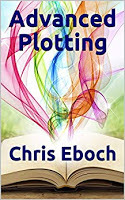 Advanced Plotting
Tip:
Advanced Plotting
Tip:• For each turning point in the story, brainstorm 10 things that could happen next. Then pick the one that is the worst or most unexpected, so long as it is still believable for the story.
Get More Writing AdviceChris Eboch is the author of over 60 books for children, including nonfiction and fiction, early reader through teen. Her writing craft books include You Can Write for Children: How to Write Great Stories, Articles, and Books for Kids and Teenagers , and Advanced Plotting .
 Her novels for ages nine and up include
The Eyes of Pharaoh
, a mystery in ancient Egypt;
The Well of Sacrifice
, a Mayan adventure;
The Genie’s Gift
, a middle eastern fantasy; and the Haunted series, about kids who travel with a ghost hunter TV show, which starts with
The Ghost on the Stairs
. Learn more at https://chriseboch.com/ or her Amazon page.
Her novels for ages nine and up include
The Eyes of Pharaoh
, a mystery in ancient Egypt;
The Well of Sacrifice
, a Mayan adventure;
The Genie’s Gift
, a middle eastern fantasy; and the Haunted series, about kids who travel with a ghost hunter TV show, which starts with
The Ghost on the Stairs
. Learn more at https://chriseboch.com/ or her Amazon page.
Published on May 11, 2019 02:30
May 4, 2019
Building a Story in Four Parts - Quick #Writing tips for #KidLit or any Writing
 I hope these quick writing tips helps you jumpstart your writing!
I hope these quick writing tips helps you jumpstart your writing!This series on Developing Ideas is excerpted from You Can Write for Children: How to Write Great Stories, Articles, and Books for Kids and Teenagers . Get the book if you want to see all the info at once. The book addresses writing stories for children, but if you want to write for adults, simply do the exercises ignoring the "as a child" part.
A Story in Four PartsLast week I talked about how a story should have a beginning, middle, and end.
If “beginning, middle, and end” doesn’t really help you, here’s another way to think of story structure. A story has four main parts: situation, complications, climax, and resolution. You need all of them to make your story work. (This is really the same as beginning, middle, and end, with the end broken into two parts, but the terms may be clearer.)
The situation should involve an interesting main character with a challenging problem or goal. Even this takes development. Maybe you have a great challenge, but aren’t sure why a character would have that goal. Or maybe your situation is interesting, but it doesn’t actually involve a problem.
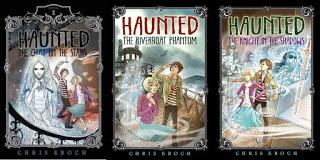 For example, I wanted to write about a brother and sister who travel with a ghost hunter TV show. The girl can see ghosts, but the boy can’t. That gave me the characters and situation, but no problem or goal. Goals come from need or desire. What did they want that could sustain a series?
For example, I wanted to write about a brother and sister who travel with a ghost hunter TV show. The girl can see ghosts, but the boy can’t. That gave me the characters and situation, but no problem or goal. Goals come from need or desire. What did they want that could sustain a series?Tania feels sorry for the ghosts and wants to help them, while keeping her gift a secret from everyone but her brother. Jon wants to help and protect his sister, but sometimes he feels overwhelmed by the responsibility. Now we have characters with problems and goals. The story is off to a good start. (This became the four-book Haunted series.)
Tips for Great Story Goals and Stakes:
 Make sure your idea is specific and narrow. Focus on an individual person and situation, not a universal concept. For example, don’t try to write about “racism.” Instead, write about one character facing racism in a particular situation.The longer the story, the higher the stakes needed to sustain it. A short story character might want to win a contest; a novel character might need to save the world.Ask why the goal is important to the character. Why does this particular individual desperately want to succeed in this challenge?Ask why this goal is difficult. If reaching the goal is too easy, there is little tension and the story is too short. The goal should be possible, but just barely. It might even seem impossible. The reader should believe that the main character could fail. (More on this in in
You Can Write for Children: How to Write Great Stories, Articles, and Books for Kids and Teenagers
, Chapter 5: Characters.)Even if your main problem is external, try giving the character an internal flaw that contributes to the difficulty. This adds complications and also makes your character seem more real. For some internal flaws, see the seven deadly sins: lust, gluttony, greed, sloth, wrath, envy, and pride. Test the idea. Change the character’s age, gender, or looks. Change the point of view, setting, external conflict, or internal conflict. Choose the combination that has the most dramatic potential.
Make sure your idea is specific and narrow. Focus on an individual person and situation, not a universal concept. For example, don’t try to write about “racism.” Instead, write about one character facing racism in a particular situation.The longer the story, the higher the stakes needed to sustain it. A short story character might want to win a contest; a novel character might need to save the world.Ask why the goal is important to the character. Why does this particular individual desperately want to succeed in this challenge?Ask why this goal is difficult. If reaching the goal is too easy, there is little tension and the story is too short. The goal should be possible, but just barely. It might even seem impossible. The reader should believe that the main character could fail. (More on this in in
You Can Write for Children: How to Write Great Stories, Articles, and Books for Kids and Teenagers
, Chapter 5: Characters.)Even if your main problem is external, try giving the character an internal flaw that contributes to the difficulty. This adds complications and also makes your character seem more real. For some internal flaws, see the seven deadly sins: lust, gluttony, greed, sloth, wrath, envy, and pride. Test the idea. Change the character’s age, gender, or looks. Change the point of view, setting, external conflict, or internal conflict. Choose the combination that has the most dramatic potential. Stop back next week (or follow the blog) and we'll go into more detail on building the middle of your story.
Get More Writing AdviceChris Eboch is the author of over 60 books for children, including nonfiction and fiction, early reader through teen. Her writing craft books include You Can Write for Children: How to Write Great Stories, Articles, and Books for Kids and Teenagers , and Advanced Plotting .
 Her novels for ages nine and up include
The Eyes of Pharaoh
, a mystery in ancient Egypt;
The Well of Sacrifice
, a Mayan adventure;
The Genie’s Gift
, a middle eastern fantasy; and the Haunted series, about kids who travel with a ghost hunter TV show, which starts with
The Ghost on the Stairs
. Learn more at https://chriseboch.com/ or her Amazon page.
Her novels for ages nine and up include
The Eyes of Pharaoh
, a mystery in ancient Egypt;
The Well of Sacrifice
, a Mayan adventure;
The Genie’s Gift
, a middle eastern fantasy; and the Haunted series, about kids who travel with a ghost hunter TV show, which starts with
The Ghost on the Stairs
. Learn more at https://chriseboch.com/ or her Amazon page.Chris also writes for adults under the name Kris Bock. Kris Bock novels are action-packed romantic adventures set in Southwestern landscapes. Fans of Mary Stewart, Barbara Michaels, and Terry Odell will want to check out Kris Bock’s romantic adventures. “Counterfeits is the kind of romantic suspense novel I have enjoyed since I first read Mary Stewart’s Moonspinners.” 5 Stars – Roberta at Sensuous Reviews blog
Read excerpts at www.krisbock.comor visit her Amazon page. Sign up for the Kris Bock newsletter for announcements of new books, sales, and more.
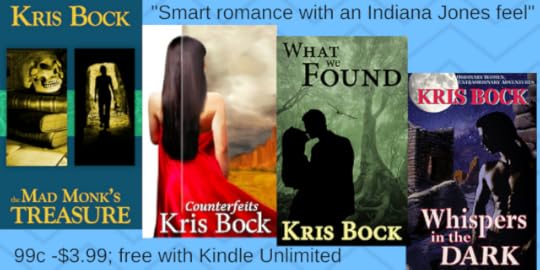
Published on May 04, 2019 03:00



